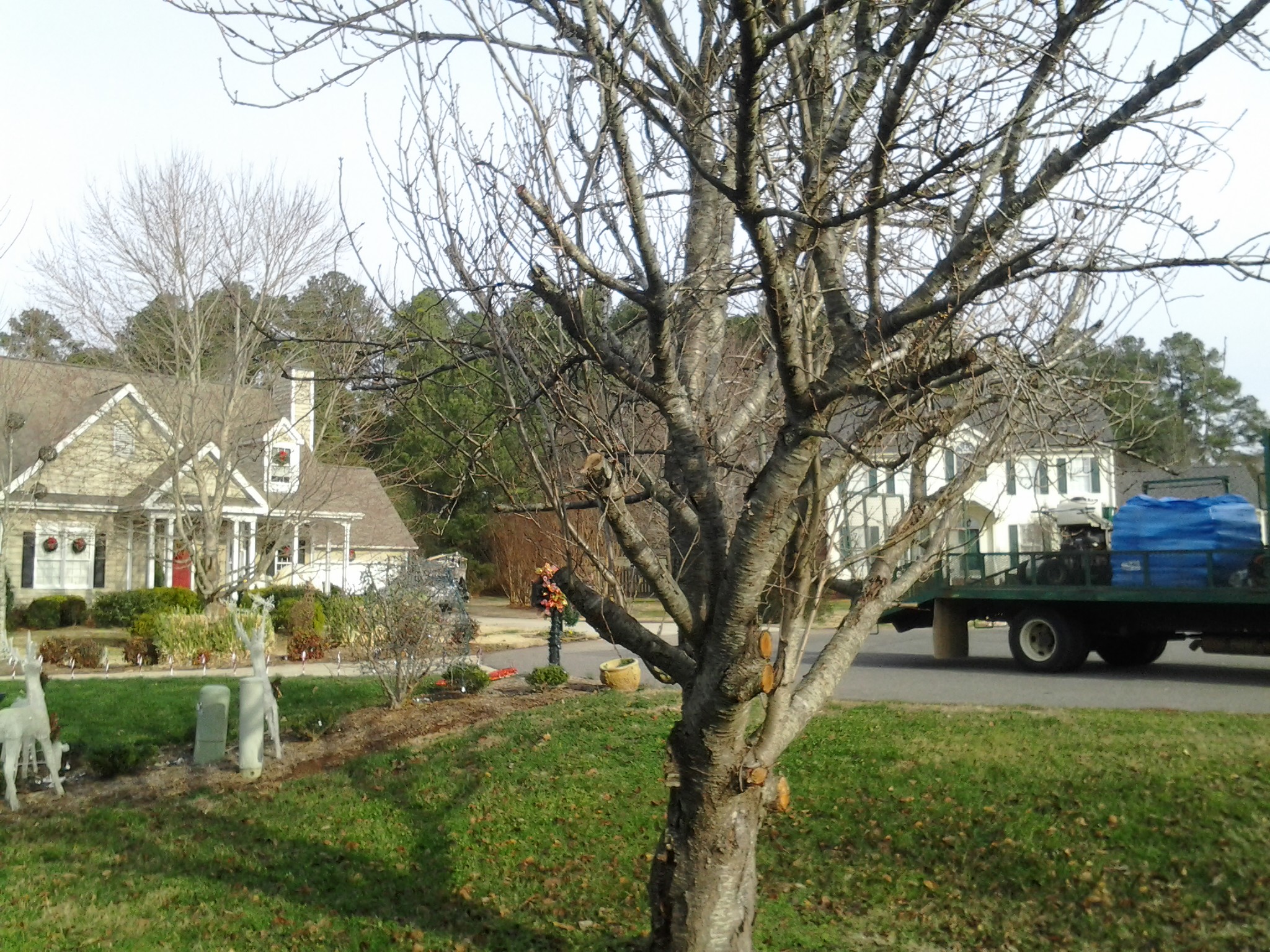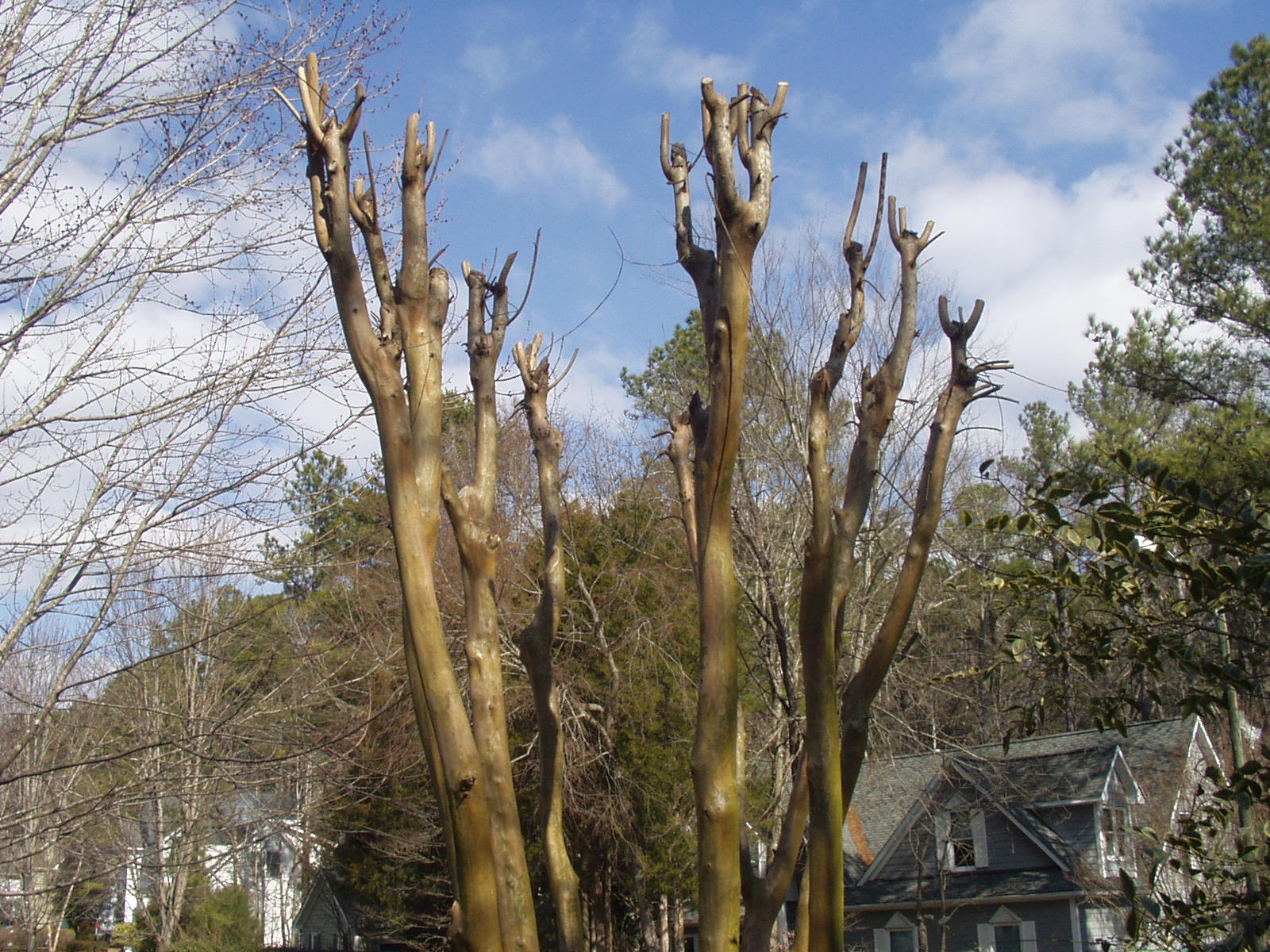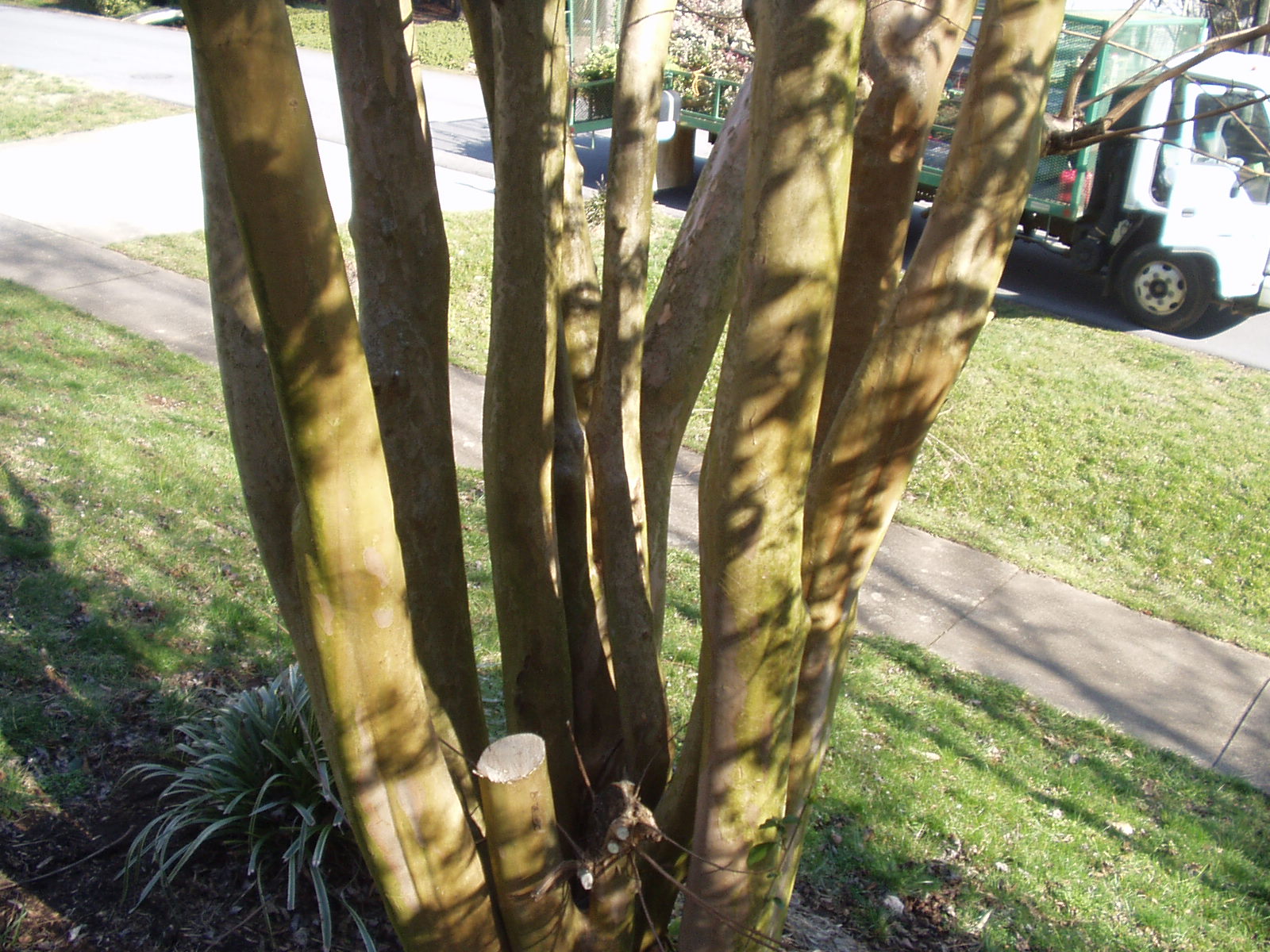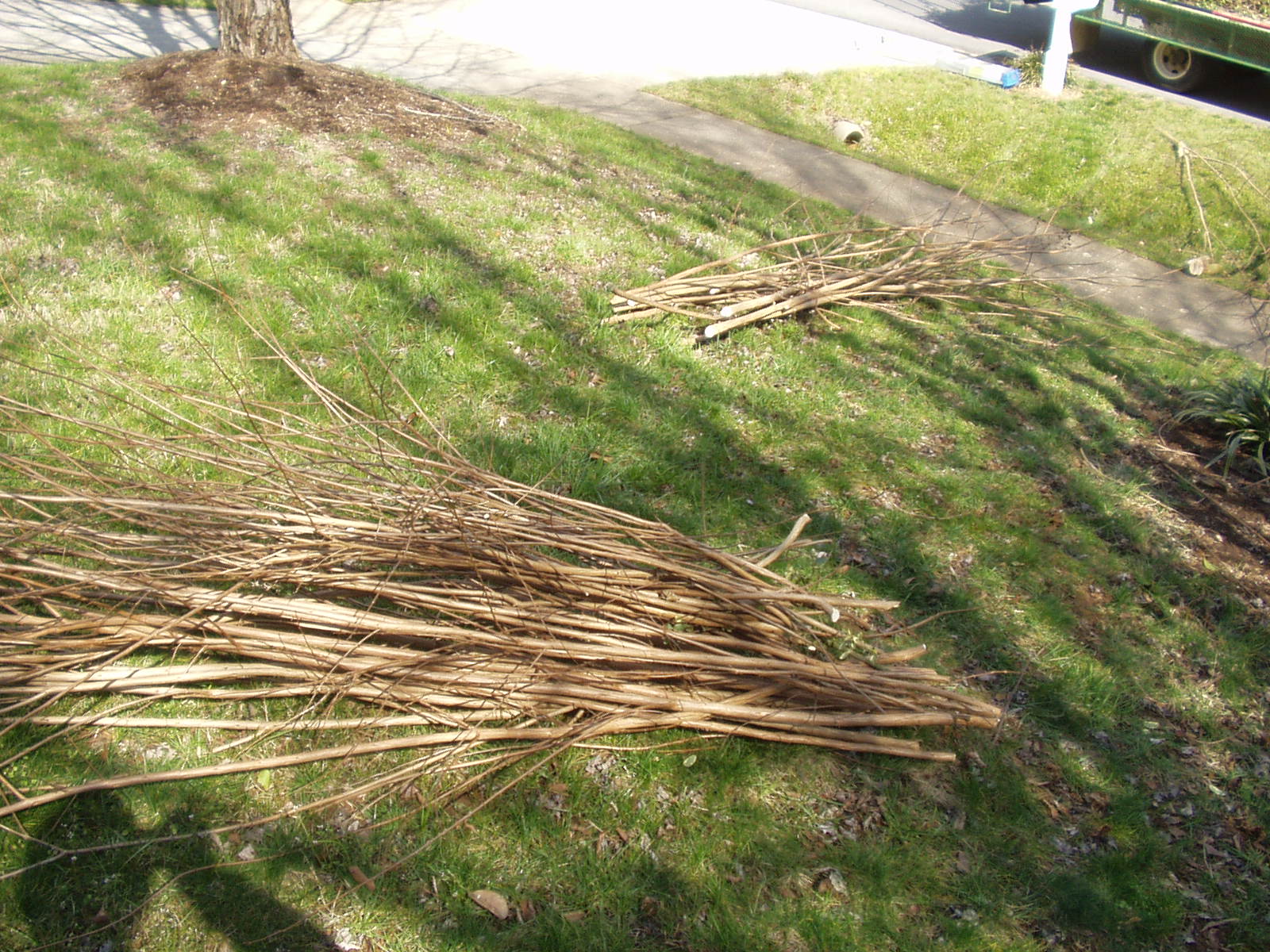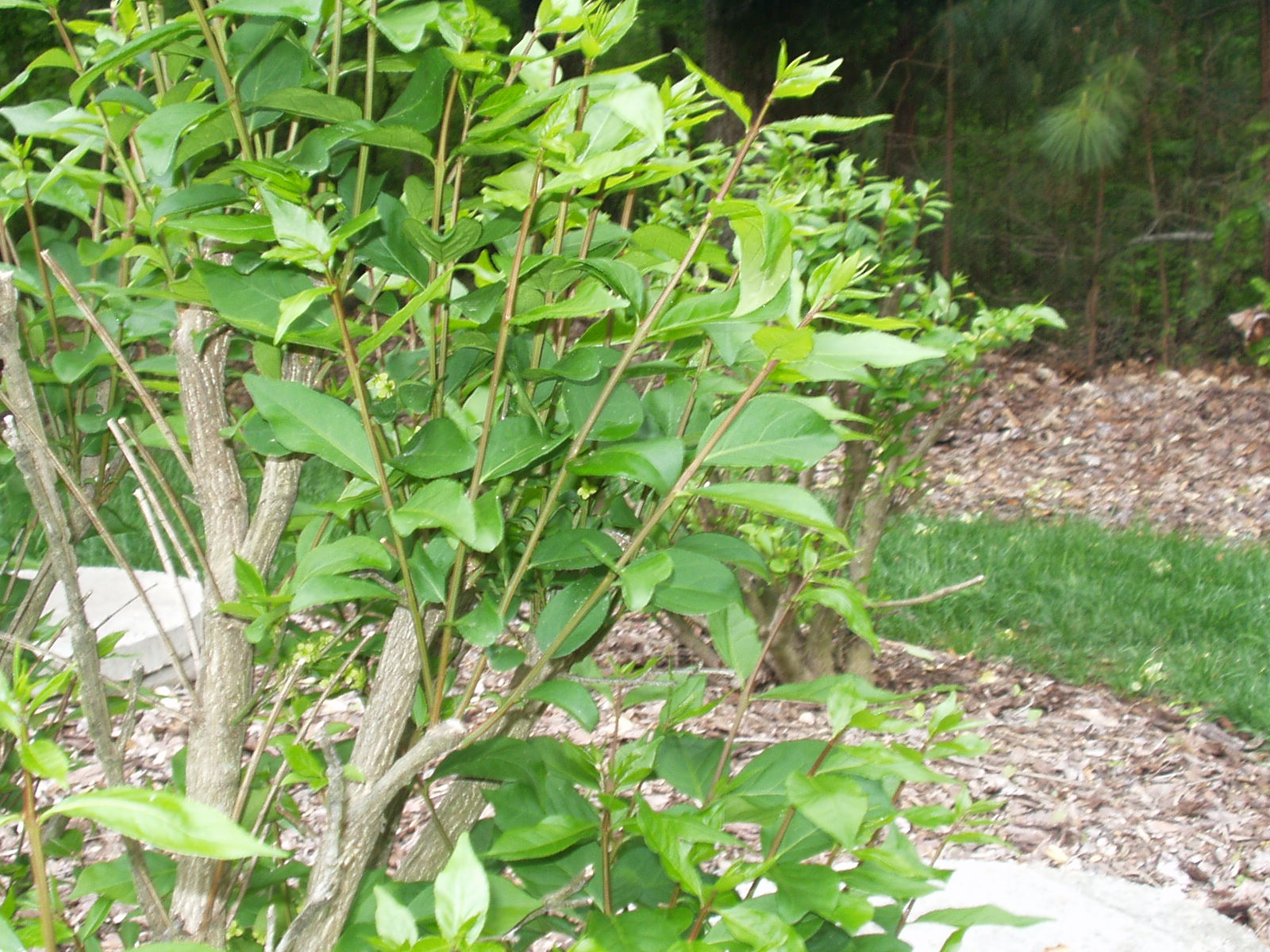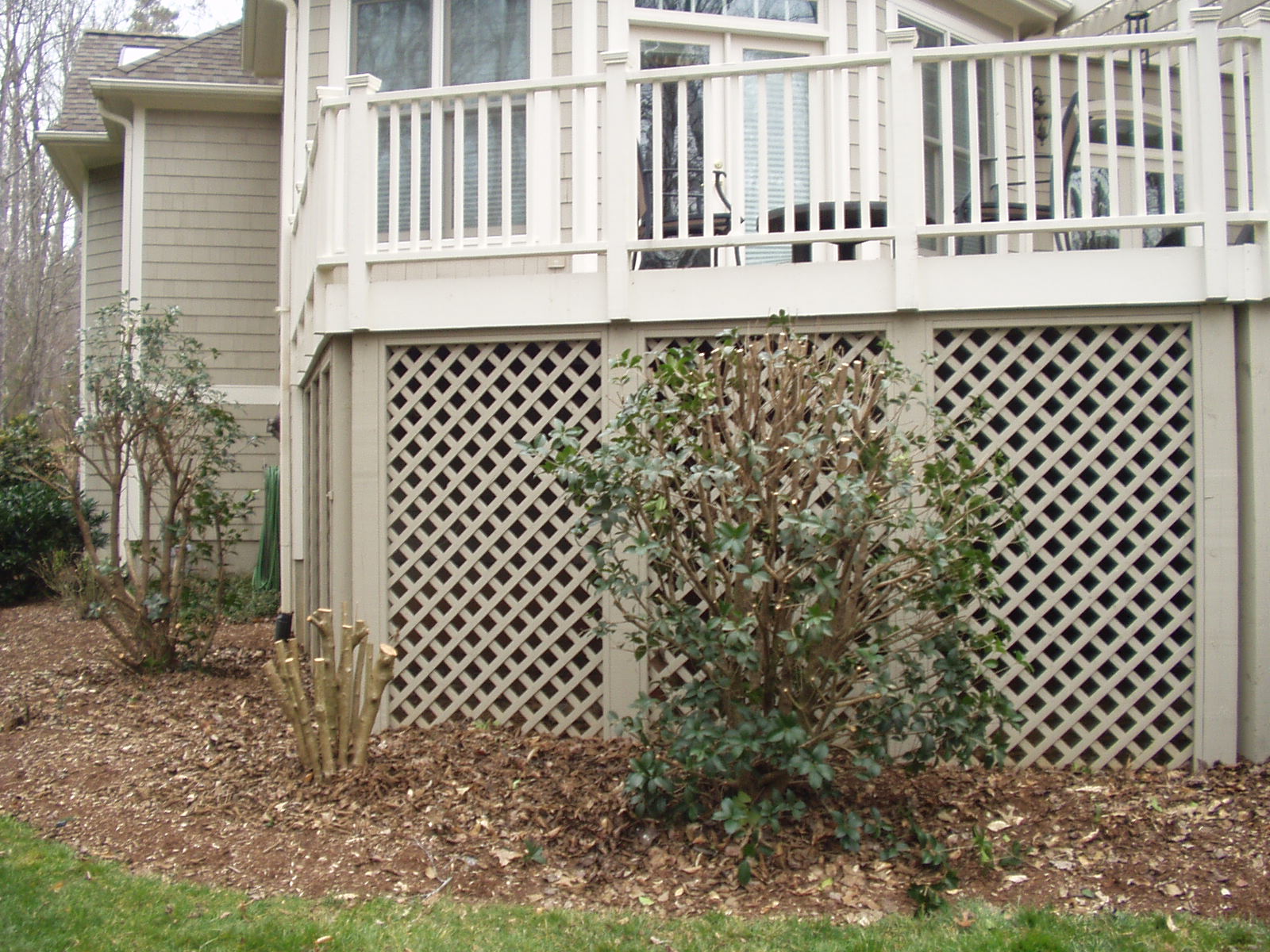Proper Pruning
When shrubs get to the point where they have outgrown their space your choices outside of doing nothing becomes replacement or corrective pruning. A size reduction effort is the better choice for many reasons, cost being one of them. Replacement has it's merits too. However, the choice to replace involves removal of existing plants, replacement and the responsibility of establishment of your new planting. If you are happy with the plants you have that have become overgrown, heavy pruning is a great option. In most cases, your overgrown shrubs are healthy, with an established root system that will require little to no care to re-grow into the size shrub suitable for its space. Not all shrubs will perform well, depending on their health and variety. A consultation is a must for this service for that reason. Also, expectations are another conversation worthy effort. I have pruned many shrubs over my thirty plus years at my career. I have had success reclaiming overgrown landscapes. Heavy pruning could be the answer to your overgrown landscape problems. In most cases, your heavily pruned shrubs will look like nursery stock by mid-summer. Shrubs that respond favorably include holly, osmanthus, euonymus, azalea, laurel, spiraea, cleyera, boxwood and many others. Juniper and similar shrubs won't respond well. Those will have to be replaced in most cases.
Some very common trees also benefit from a size reducing pruning effort. Namely Bradford pear trees. They are subject to wind and ice damage. The wood of pear trees is brittle and can snap off large branches under extreme conditions. They, like most shrubs, respond favorable to pruning to reduce size. Another very common tree, the Leyland cypress, benefits from a topping. In most cases this tree is used for a privacy screening. Once it reaches its intended size, any growth beyond that is not necessary. Topping a Leyland cypress slows the top growth and promotes more girth growth.
We prune many other trees as well. We have an aerial lift that will safely get us up as high as thirty feet without the need to climb trees or use ladders. Crape myrtles require a lot of thinning pruning that involves being safely up off the ground. Not to mention the experience to make the proper pruning cuts. With all pruning jobs, we haul away the debris.

